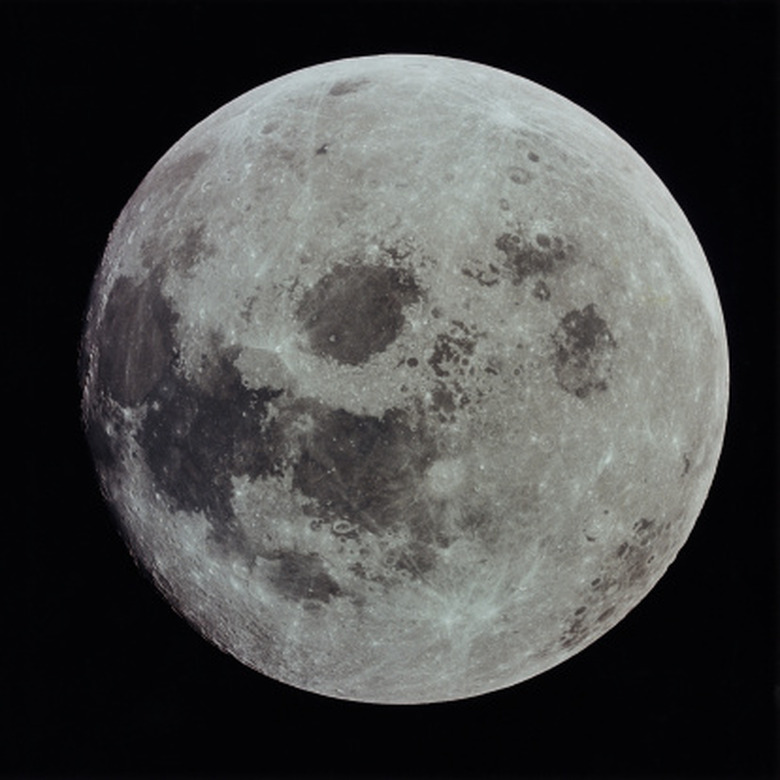How To Track The Moon's Path Across The Sky
The moon revolves around the Earth completing one full orbit every 27.3 days. As the moon orbits the Earth, it also goes through changes in appearance called phases. These phases are caused by the angle of the sunlight striking its surface. Tracking the path and the phases the moon can be completed by either a nightly observation over a period of days or through an all-night moon watch.
Nightly Observation
Step 1
Start the observational period on a "new" moon period. A new moon is when there appears to be no moon in the sky. Many calendars will list when a new moon is to occur.
Step 2
Choose a time to observe the moon each night. The observation of the moon must be completed at the same time each night to get a sense of the path of the moon as it completes its orbit around Earth. Moonrise is a good time to observe the moon. To find the moonrise time in your area use the Astronomical Applications Department of the United States Naval Observatory or the Time and Date Website.
Step 3
Select a location to view the moon. The location must be an open area to easily allow you to see the moon. The best locations provide good views across the entire east to west horizon. The location to view the moon should be used for all observations.
Step 4
Draw a sketch of the moon each night during the observation period to provide information on both the phase and relative location of the moon in the night sky.
Step 5
Write observations in a notepad on the location of the moon. Observations include height above the horizon. Position regarding east to west movement. Select a landmark to compare the position of the moon too. Measure the distance with the width of your hand. Hold you hand out at arms length and count how many "widths" the moon is away from the land mark.
Step 6
Continue observations nightly until full moon is reached, approximately two weeks after new moon or continue observations until the next new moon. New moon to new moon periods are almost 30 days apart.
One Night Observation
Step 1
Select a clear night to observe the moon. Check with Astronomical Applications or Time and Date websites to determine when moonrise will occur in your area.
Step 2
Find a window which has a clear view of the east and west horizon. If your home does not have a good east and west view, a plexiglass board can be used.
Step 3
Tape a moon shape on the window to mark the position of the moon at moonrise.
Step 4
Place another moon shape on the window every hour to mark the path of the moon across the sky.
Step 5
Continue adding moon shapes every hour until moonset or you can no longer easily see the moon through your window.
Things Needed
- Sketch pad
- Notebook
- Pencil
- Glass
- Moon shapes
- Tape
Cite This Article
MLA
Carpenter, Michael E. "How To Track The Moon's Path Across The Sky" sciencing.com, https://www.sciencing.com/track-moons-path-across-sky-8622008/. 24 April 2017.
APA
Carpenter, Michael E. (2017, April 24). How To Track The Moon's Path Across The Sky. sciencing.com. Retrieved from https://www.sciencing.com/track-moons-path-across-sky-8622008/
Chicago
Carpenter, Michael E. How To Track The Moon's Path Across The Sky last modified March 24, 2022. https://www.sciencing.com/track-moons-path-across-sky-8622008/
